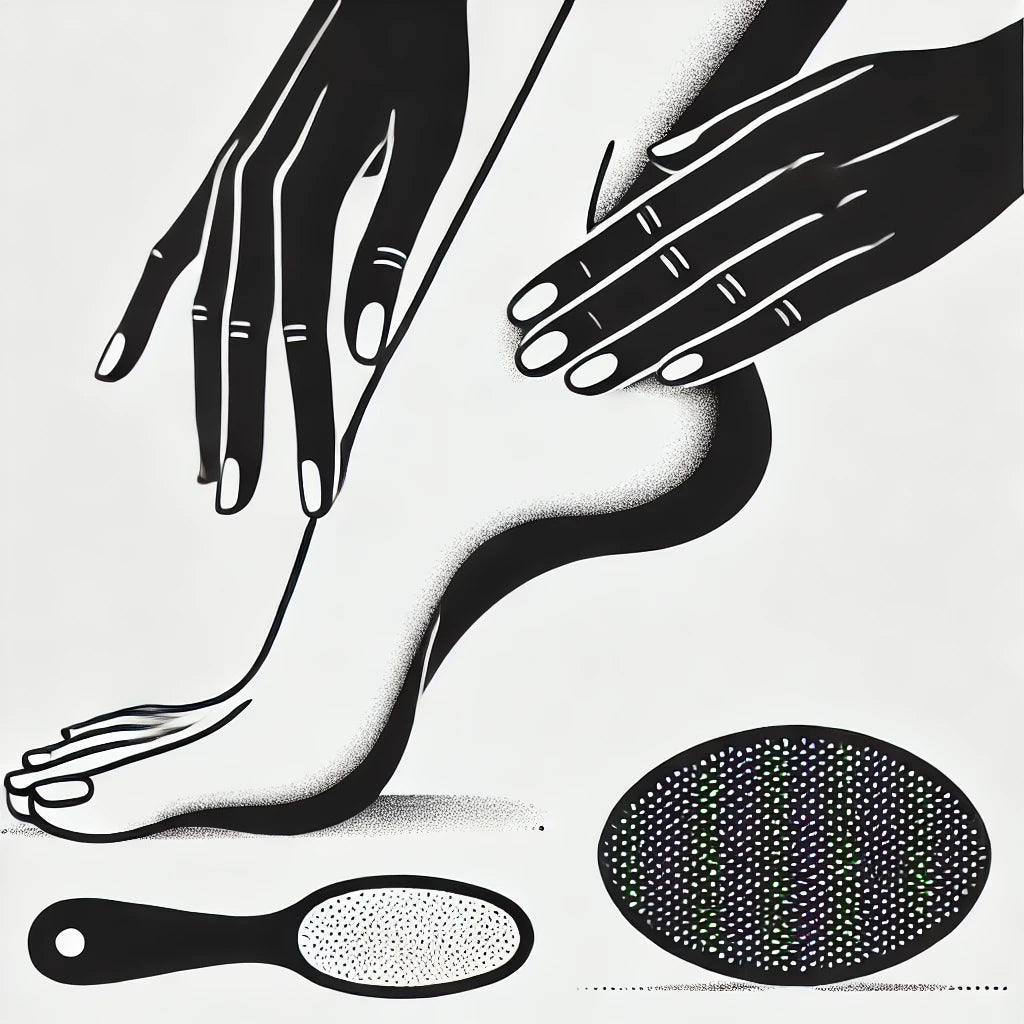
How to Take Care of Your Heels: Essential Tips for Healthy Feet
Share
Your heels play a crucial role in supporting your body weight and maintaining balance. However, due to daily wear and tear, they are often prone to dryness, cracking, and pain. Proper heel care is essential for maintaining comfort and preventing foot-related issues. In this guide, we’ll explore the best practices for heel care, including effective treatments and prevention methods.
Common Heel Problems and Their Causes
1. Cracked Heels (Heel Fissures)
Cracked heels occur due to dryness and lack of moisture. Factors like standing for long hours, walking barefoot, and exposure to harsh weather conditions can worsen the problem.
2. Heel Pain (Plantar Fasciitis)
Heel pain is commonly caused by plantar fasciitis, which results from inflammation of the tissue connecting the heel bone to the toes. It can be triggered by excessive walking, running, or wearing unsupportive shoes.
3. Calluses and Corns
Calluses and corns develop due to friction and pressure from tight shoes or prolonged standing. These hardened areas of skin can cause discomfort and pain if left untreated.
Best Practices for Heel Care
1. Keep Your Heels Moisturized
One of the most effective ways to prevent cracked heels is to apply a moisturizing cream or foot balm daily. Look for products containing ingredients like:
Shea Butter – Deeply hydrates and nourishes the skin.
Urea – Helps to soften thickened skin.
Glycerin – Locks in moisture and prevents dryness.
2. Exfoliate Regularly
Dead skin buildup can contribute to cracked and rough heels. Use a pumice stone or foot scrub to gently exfoliate your heels at least twice a week. Avoid excessive scrubbing, as it may worsen cracks and irritation.
3. Wear Proper Footwear
Choosing the right footwear is crucial for heel health. Consider the following tips:
(1)Wear shoes with cushioned soles and arch support.
(2)Avoid high heels and flip-flops for extended periods.
(3)Use orthotic insoles if you have flat feet or high arches.
4. Stay Hydrated and Maintain a Healthy Diet
Drinking enough water and eating a balanced diet rich in vitamins and minerals can improve overall skin health. Nutrients like vitamin E, omega-3 fatty acids, and zinc play a vital role in preventing dryness and promoting healing.
5. Soak Your Feet for Relaxation
A warm foot soak can help soften the skin and relieve discomfort. Try this simple foot soak:
Warm Water + Epsom Salt: Helps reduce inflammation and soothes sore heels.
Apple Cider Vinegar: A natural exfoliant that softens dead skin.
Coconut Oil: Provides deep hydration when applied after soaking.
6. Avoid Walking Barefoot
Walking barefoot on hard surfaces can increase pressure on your heels, leading to cracks and discomfort. Wear socks or slippers indoors to protect your feet.
7. Use a Nighttime Foot Mask
For deep hydration, apply a thick layer of foot cream or petroleum jelly before bed and wear cotton socks overnight. This helps retain moisture and speeds up the healing process.
When to Seek Professional Help
If home remedies don’t improve your heel condition, or if you experience severe pain, bleeding cracks, or signs of infection, consult a podiatrist. A medical professional can recommend advanced treatments such as medicated creams, custom orthotics, or physical therapy.
Conclusion
Caring for your heels is essential for maintaining healthy and pain-free feet. By following these simple yet effective tips, you can prevent common heel problems and enjoy comfortable, well-nourished skin. Prioritize heel care today to step into a healthier tomorrow!
